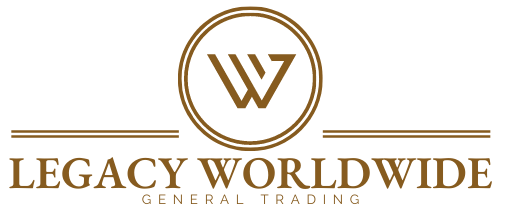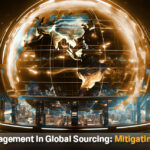Strategic sourcing sounds like one of those big business terms, but in actual, it’s integral to the success of businesses. When executed in a strategic manner, sourcing enables businesses to cut costs, streamline supply chains, and come up with innovation. These benefits allow companies to grow and adjust to changes more easily.
A NetSuite report states that 54% of Chief Procurement Officers are implementing strategic sourcing measures in their business. Plus, this also helps make their supply chains stronger. But what makes strategic sourcing so important?
What is Strategic Sourcing?
Strategic sourcing helps firms in making value-for-money choices for the buying of goods and services. It does not merely look for the ‘best’ or the ‘cheapest’; it instead emphasizes adding value, building close relations with suppliers, and ensuring purchasing in line with corporate objectives.
In the case of regular buying, the focus is on saving costs quickly. Whereas, strategic sourcing looks at the bigger picture. It creates strong, lasting partnerships by understanding the actual business needs, keeping a check on what suppliers have to offer, focusing on innovative ideas, and being eco-friendly.
In short, strategic sourcing is not just about buying things—it’s about improving every step of the process.
Benefits of Strategic Sourcing
Strategic sourcing isn’t just about saving money. It helps businesses work better, build stronger relationships with suppliers, and adjust to changes in the market. By using strategic sourcing, companies can grow and become more valuable over time. Here are the main benefits:
Cost Efficiency
Strategic sourcing helps businesses save money by looking closely at supplier contracts, market trends, and pricing. A 2023 BCG report says companies that use procurement partnerships can save 3-10% on in-scope spending.
Risk Mitigation in the Supply Chain
Strategic sourcing helps businesses prepare for problems by using different suppliers and having backup plans. If something goes wrong, companies that depend on only one supplier can face big issues.
Enhance Supplier Relationships
Good relationships with suppliers are a key part of strategic sourcing. Working closely together improves communication, quality, and results for everyone.
The Strategic Sourcing Process
A methodical approach to managing purchasing that aids in achieving long-term corporate objectives is strategic sourcing. Selecting suppliers is only one aspect of it; another is forming lasting partnerships that promote innovation, enhance quality, and save costs. Every stage of the procedure contributes to the development of a robust and trustworthy supply chain.
Assess Business Needs
Strategic sourcing starts with the what: what is it that the business needs and wants to achieve? Are you seeking cost savings, improved product quality, greener methods, or looking to strengthen the supply chains?
Market Analysis and Supplier Identification
Market research is an important step where you study both the big picture and the small details of your industry. This means looking at trends, new technologies, what suppliers can do, prices, and any risks. Tools like supplier checks and SWOT analysis help find trustworthy suppliers.
Contract Negotiation
The negotiation process in strategic sourcing has many parts. It’s not just about talking about costs. It’s also about setting clear goals, making sure contracts allow flexibility for growth, and following legal and ethical rules. Sustainability is another important part. Contracts should explain what is expected, what happens if something goes wrong, and how problems will be solved.
Performance Monitoring
Once you sign the contract, it’s essential to monitor the performance of suppliers. This means checking things like delivery times, product quality, and costs. Tools like supply chain dashboards can give real-time updates. This makes it easier to see if suppliers are meeting expectations.
Use of Technology for Sourcing
Technology is playing a bigger role in making strategic sourcing easier and more efficient. Tools like artificial intelligence can look at supplier performance, predict what products will be needed, and find ways to save money. Blockchain adds trust and transparency by creating unchangeable records of transactions, which helps track items and prevent fraud.
How Strategic Sourcing Drives Business Growth
Strategic sourcing is about more than just saving money. It helps businesses grow, stay strong during tough times, and stay ahead of the competition. By connecting sourcing strategies with business goals, companies can find value in many parts of their operations.
Alignment of Sourcing Goals
Strategic sourcing helps make sure a company’s purchases support its big goals. When businesses expand into new countries, they use these strategies to find reliable suppliers who can deliver the same quality everywhere. In fact, 61% of Chief Procurement Officers say increasing the value of supplier collaboration can deliver the most value as per a Deloitte report.
Collaboration with Suppliers
Suppliers can bring fresh ideas that help businesses get better. For example, Procter & Gamble partnered with its suppliers to make eco-friendly packaging. This reduced waste and met customer demands for greener products. Businesses that care about Environmental, Social, and Governance (ESG) goals often experience operational efficiency of 12-21% more in value than their competitors.
Sustainability in Supply Chains
Sustainability is one of the major factors in the world today. Strategic sourcing helps an organization work with the suppliers who follow the environment protection measures actively. It adds to the reputation of a company and keeps it always within the ambit of the law. In today’s supply chains, sustainability is the mantra. As recorded, 90% of companies believe in Go Green measures and 60% of them implement sustainability measures.
Strategic Sourcing Challenges
Strategic sourcing has many benefits, but it also comes with challenges. Some people are hesitant to try it. Some business decision-makers find it hard to balance cost and quality, and many businesses don’t know enough about new markets. A PwC study found that companies often struggle with strategic sourcing because they don’t have enough information about suppliers.
Resistance to Change
Switching from old ways of buying to strategic sourcing can be hard. Employees used to older systems might not want to try something new, which can slow things down.
Limited Market Knowledge
Businesses often have little knowledge about local suppliers when they enter new markets. This may result in lost opportunities or the selection of untrustworthy vendors.
Balance Cost and Quality
Sometimes, the right balance is hard to strike between great quality and cost savings. Too much cost-cutting can also affect a company’s reputation if the quality is compromised.
Real-Life Examples of Strategic Sourcing Success
Strategic sourcing has proven successful across various industries. Below are some examples demonstrating its value:
- Retail: Walmart strategically sources items from its suppliers to cut down shipping costs and make their supply chain smoother and efficient.
- Automotive: Automotive leader Toyota’s just-in-time method helps them avoid waste of resources and get parts delivered right on time. It shows how teamwork with suppliers makes a big difference.
- Healthcare: The pharmaceutical company Johnson & Johnson works together with suppliers in utilizing environmentally friendly materials, hence making their products environment-friendly.
- Furniture: The multinational conglomerate IKEA makes use of renewable materials from trusted suppliers. In this way, IKEA projects itself as a sustainable business.
- Hospitality: Hotel chain Marriott procures top-notch items from suppliers using a strategic sourcing approach. This makes sure that their guests always have a great experience and stay loyal to the brand.
- Fashion: The Fashion retailer, H&M partners with ethical suppliers. This enables them to keep their business transparent and meet customer demands for sustainable and eco-friendly clothing.
Strategic Sourcing Trends
With the evolution of business landscape, the sourcing process has transformed and some emerging trends are shaping the future of supply chain such as:
Adoption of AI and Data Analytics
AI helps companies predict what they need and choose the best suppliers. A report by Gatrner states that 79% of strategists believe that AI is essential to their business success. According to another research, 87% of companies are now using eProcurement tools for their buying process.
Focus on Sustainability and Reusing
Circular supply chains are about reusing materials to cut down waste. This saves money and gives customers the eco-friendly options they want.
Support a Mix of Suppliers
Working with different types of suppliers, like small businesses and minority-owned ones, makes supply chains stronger and sparks new ideas.
Remote Collaboration
Digital tools make it easy to work with partners around the world. This helps teams stay connected and get work done smoothly.
Conclusion
Strategic sourcing is a way to save money, encourage new ideas, and create strong supply chains. By matching how companies buy things with their overall goals, they can do well over time and stay ahead of others.
As businesses evolve, the use of AI, eco-friendly ideas, and digital tools can make sourcing even better. Strategic sourcing aims to support the expansion and success of your company,
Legacy Worldwide transforms procurement by connecting businesses with trusted manufacturers worldwide, ensuring reliable, scalable, and customized sourcing solutions. Our end-to-end approach simplifies supply chain management, enabling you to focus on your core goals while we handle compliance, logistics, and quality assurance. Whether you’re furnishing large-scale developments or meeting sustainability goals, we deliver solutions you can count on-every time.
References
- (What Is Strategic Sourcing? Process and Benefits – NetSuite)
- (Why Procurement Partnerships Fail—and How to Get Them Right – BCG)
- (2023 Global Chief Procurement Officer Survey – Deloitte)
- (20 Advantages for Businesses to Invest in ESG & Sustainability – Digital Defynd)
- (Businesses Going Green Statistics: How Maintaining Earth is Good for Business – ProfileTree)
- (Digital Procurement Survey – PwC)
- (Gartner Press Release)
- (Summer Reading: Eleven Critical Stats on Procurement and Sourcing in 2024 – CoreX)










